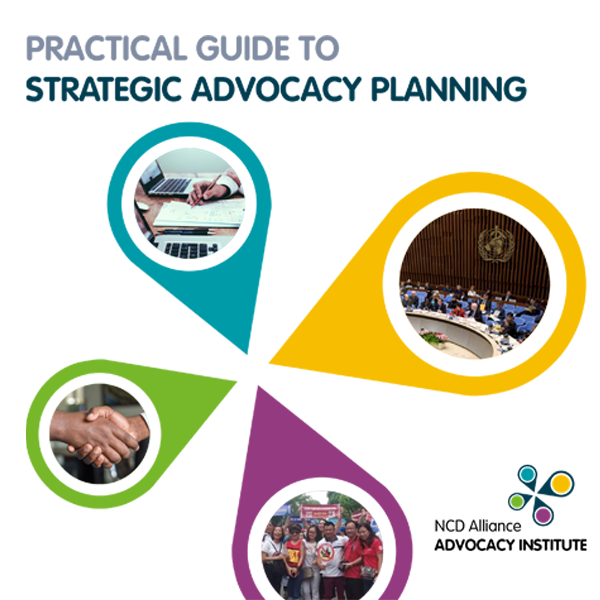About the GUIDE
Advocacy is about seeking systems change. It is our tool for influencing policies, programmes, laws and regulations, and even funding allocations. Advocacy is powerful, but it requires a well-thought approach to promote a specific issue, with a clear understanding of the surrounding social, health, and political context.
NCDA’s Practical Guide to Strategic Advocacy aims to support NCD civil society, particularly national and regional NCD alliances, as they plan and carry out successful and strategic advocacy campaigns. It presents eight key steps to advocacy planning, with examples, case studies from the network, advocacy tools and other resources.
We hope that it will make advocacy more accessible and inspire NCD alliances to take action as NCD advocates.
This Practical Guide was developed thanks to NCDA’s partnership with The Leona M. and Harry B. Helmsley Charitable Trust.
The eight steps of strategic advocacy planning
These eight steps help provide building blocks for civil society to plan and conduct advocacy efforts. Your organisation can use these steps sequentially or refer to specific ones to guide your advocacy campaign as needed.
Each step below features a video tutorial with additional resources that you can download in PDF format.
Step 1
Gather data and assess the current status of NCD prevention and control in your local area, country, or region.
Step 2
Based on what you learn in Step 1, select your advocacy issue, and determine your goals and objectives for your advocacy campaign.
Example of an advocacy issue (0.057MB)
Tool 3: Problem tree: Understanding problems, causes, and effects (0.096MB)
Tool 4: Checklist for selecting/prioritising an NCD advocacy issue (0.050MB)
Example of an advocacy goal (0.055MB)
Example of NCD advocacy objectives (0.052MB)
Tool 5: Worksheet for defining advocacy issues, goals, and objectives (0.056MB)
Step 3
Map out those who have direct decision-making capacity or influence over your selected NCD advocacy issue.
Step 4
Form partnerships with a common purpose, both within and beyond the NCDs and health sectors, to achieve your advocacy goals and objectives.
Step 5
Select your advocacy tactics and create your advocacy messages to tell those who have the power why you want the change.
Step 6
Develop a strong workplan and budget to take concrete steps towards making your NCD advocacy campaign a reality.
Step 7
Look for a key event or other window of opportunity as the moment to launch your NCD advocacy campaign.
Step 8
Keep track of your NCD advocacy campaign activities and assess your progress through monitoring, and measure your overall achievements and lessons learned.
